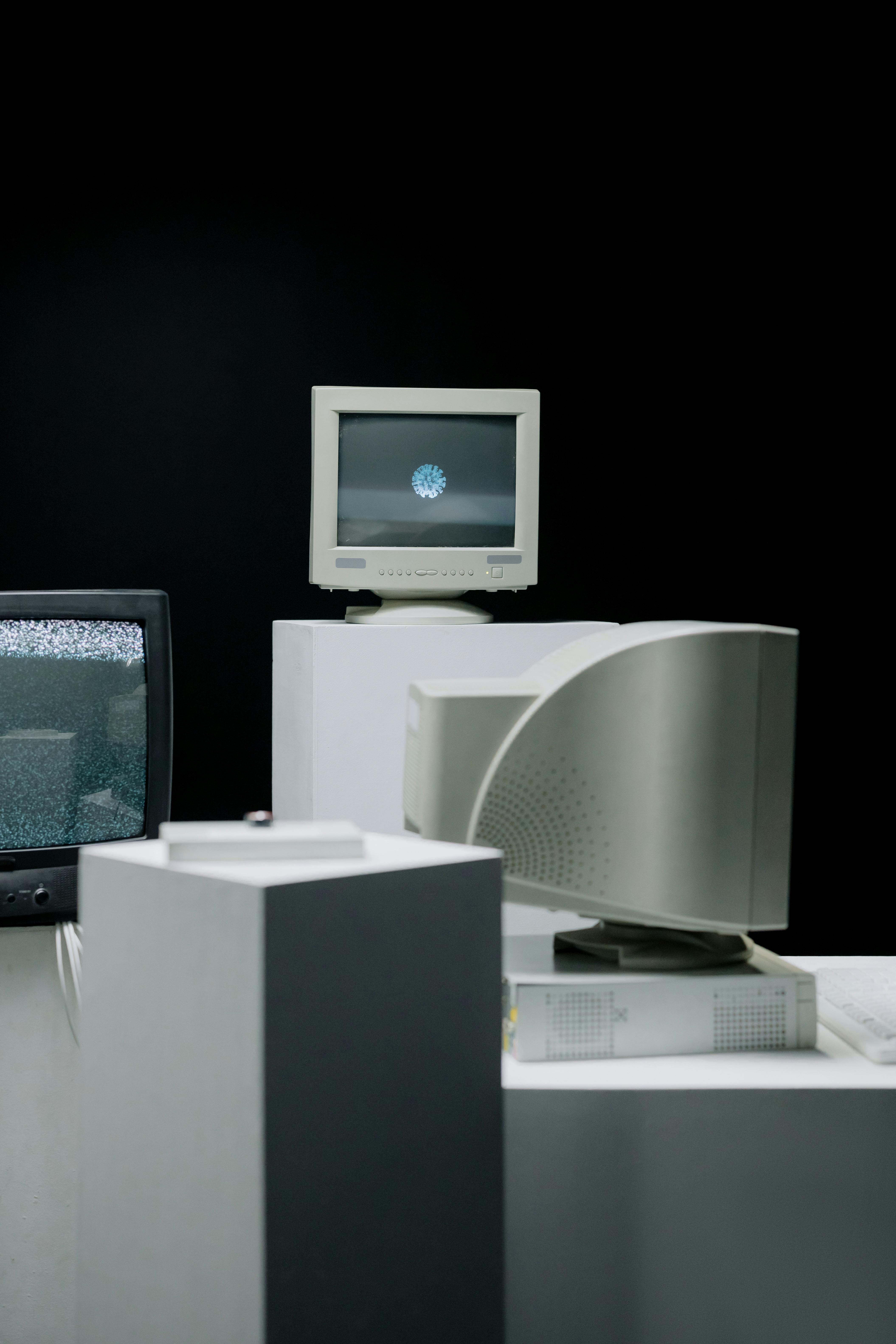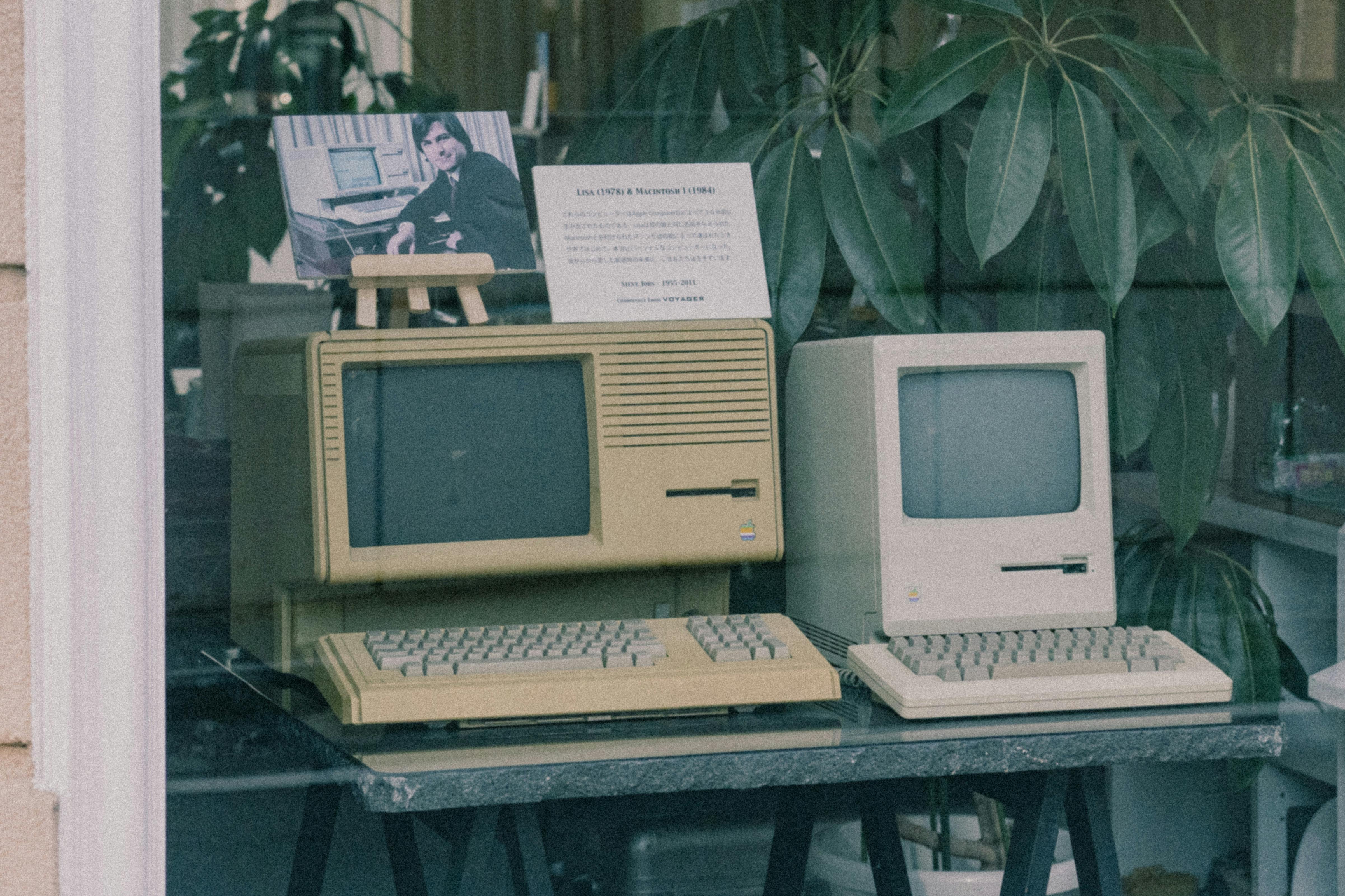Who Made the First Computer? The Untold History & Key Innovators
Let me set the scene: It’s early morning and I’m staring at a battered engineering textbook from the 1970s, cup of coffee in hand, feeling that familiar sense of awe—and frustration—that comes from wrestling with one of technology’s most deceptively simple questions: Who made the first computer? It’s the kind of question that seems to have a neat answer. Trust me, it doesn’t. Over my 15+ years working at the intersection of tech reporting, history curation, and digital education, this topic has haunted every interview, panel, and lecture I’ve ever attended. I’ve also seen it spark heated debate between engineers, historians, and (surprisingly often) casual museum-goers.
Why is this so challenging? Because the word “computer” itself is a moving target. Are we talking programmable digital computers, analog systems, ancient calculators, or the humans who were called “computers” long before silicon chips entered the scene? Every time I revisit this, I want to “revise my earlier point”—because each decade seems to reveal a new unsung pioneer or update the definition itself.
So, what really strikes me—and what you’ll notice as we dig in—is not just the sheer brilliance of these pioneers (though that’s a story worth telling), but the genuine messiness: rivalry, misattribution, forgotten blueprints, and fits of accidental genius that define “the first computer.” I’ll be upfront: We are navigating a topic where certainty is, by and large, an illusion. But that’s what makes this journey fascinating. Let’s embrace the ambiguity—and see what we discover together.
What Counts as a Computer?
First things first—let’s agree on what we’re actually looking for. You have to define “computer,” and honestly, every time I try, I end up with another caveat. Is it electronic? Programmable? Digital only?
- Programmability: A machine that can follow a set of instructions (i.e., a program)
- Automation: Capable of operating automatically, not just mechanical calculation
- Electronic vs. Mechanical: Some only count fully electronic digital computers (with vacuum tubes/transistors), and that excludes a LOT of early pioneers
- General versus Special Purpose: Should we only count general-purpose computers, or specialty machines such as calculators?
Here’s a quote that’s stuck with me—from a heated roundtable at the Computer History Museum:
“Every era redefines what it means to compute. The first computer depends entirely on where you draw the line.”
I’ve personally leaned (over the years) toward a broad definition—anything designed to automate calculation by programmable means. But I go back and forth—especially after late-night deep dives into Charles Babbage’s letters or Alan Turing’s wartime memos.
Key Insight
Here’s the honest truth: Every time you ask “who made the first computer?”, you’re really choosing which definition you find most compelling. That’s not a trick; it’s the legacy of a field built on reimagining its own identity.
The Antikythera, Pascal, and Babbage: Early Contenders
Let’s rewind—way back. Did you know the Greeks built what many call the world’s first “analog computer” around 100 BCE? The Antikythera mechanism stunned archaeologists when it was recovered from a shipwreck in 1901—and its gear-based astronomical calculations are, frankly, mind-blowing1. Was it programmable? Not really. Automated? Yes, to an extent.
Fast forward fifteen centuries, and you land at Blaise Pascal (France, 1642)—the Pascaline. This was a mechanical calculator, not a computer by most definitions, but the iterative leap to Babbage’s Difference Engine (1822) and, more critically, his Analytic Engine (1837), is what really changes the landscape2.
I remember when I first actually saw Babbage’s incomplete Difference Engine (in bits and pieces at the Science Museum, London). What struck me wasn’t the machinery, but the sense of ambition: Babbage tried—decades before electricity—to invent a fully automatic, programmable, general-purpose computing machine. Ada Lovelace famously wrote programs for it—that’s right, the very first algorithms intended for a machine.
Did Babbage Build the First Computer?
Here comes the rub: Babbage designed the first general-purpose computer, but never actually built it. (Not for lack of trying.) If you’re a “plans count” person, maybe he deserves the title. But if “built and ran” is your line, keep reading.
The Dawn of Electronic Computing
Okay, so you’re starting to see why this topic gets murky. For every Babbage or ancient Greek marvel, there’s the question: When does calculation become “computation”? When does a clever calculator become a programmable, electronic computer? I’ll be honest—I used to think this leap was clear-cut. Now I realize it’s anything but.
Let’s set the late 1930s/early 1940s scene. Calculating tables by hand was grueling (I genuinely cannot underestimate the scale of tedium here), and nations were racing for technological advantage. Dozens of brilliant, sometimes eccentric, engineers began tinkering with relays, vacuum tubes—and entirely new ideas about automation.
Featured Snippet: What Was the First Electronic Computer?
The Atanasoff–Berry Computer (ABC), built from 1937 to 1942 at Iowa State College, is widely regarded as the first electronic digital computer to automate computation using vacuum tubes.3
The Atanasoff–Berry Computer: An Overlooked Pioneer
I’ll confess: my perspective shifted considerably after I dug into the story of John Atanasoff and Clifford Berry. The ABC predates the more famous ENIAC, using about 300 vacuum tubes to solve linear algebraic equations. It’s not as general purpose as later machines, but it was electronic and digital—crucial features missing from everything earlier. The ABC wasn’t fully programmable in the modern sense, and it never ran more than a one-off solution to systems of equations, but I can’t help but marvel at its ambition.
Key Debate
If programmability is optional (for you), Atanasoff and Berry may have your vote. But, if you’re strict about general-purpose, stored-program capability, you may hesitate—just as I did.
Quick Table: Let’s break down some “first computer” contenders and what made them unique:
| Machine | Year | Country | Key Feature |
|---|---|---|---|
| Atanasoff–Berry Computer (ABC) | 1942 | USA | First electronic digital computer (not general purpose) |
| Z3 (Konrad Zuse) | 1941 | Germany | First programmable, functional digital computer |
| Colossus | 1944 | UK | First programmable electronic digital computer (special purpose) |
| ENIAC | 1945 | USA | First general-purpose electronic digital computer |
Konrad Zuse: The Z3 and the German Frontier
Speaking of programming, Konrad Zuse never gets enough credit—maybe due to the shadow of WWII, maybe due to postwar politics. Back in 2004, at a Berlin tech conference, I met a Hungarian engineer who swore that Zuse’s story was criminally overlooked in Anglo-centric tech history. I’ve come around to agree.
Zuse’s Z3 was completed in 1941—before the ABC. It used electromechanical relays (not vacuum tubes), but, here’s the killer feature: it was programmable. Turing-complete? By and large, yes. Zuse invented the concept of a simple but universal machine that could read a tape containing both instructions and data—arguably the first general-purpose programmable computer.4
“Zuse’s Z3 was, in a real sense, the mother of all computers—lost to bombing raids and buried in academic obscurity.”
But here’s the twist: the original Z3 was destroyed in a 1943 air raid. Zuse’s achievement only recently got its due in the computing canon.
What About the “Colossus”?
The UK’s Colossus machine (declassified only in the 1970s) was built in 1944 for cryptanalysis at Bletchley Park. It’s often called the first programmable electronic computer, but in truth, it was special-purpose, designed for codebreaking, not general computation.5
The more time I spend in the archives (and I’ve lost months of my life there, happily), the more I’m convinced that these parallel inventions—by Zuse, Atanasoff, the Colossus team—were as much a product of necessity and timing as of individual genius. Anyone else feel that way when digging through innovation timelines?
Interactive Prompt
Pause here and think about: What do you consider more impactful—the invention itself, or the recognition and adoption that follows? I find myself re-evaluating my own criteria every time.

ENIAC, Turing, and the British Codebreakers
Now let’s talk about the two most “famous” candidates for first computer—the ENIAC (USA) and Colossus (UK). Most mainstream history books (especially those published before 2000) focus on ENIAC, and for good reason. ENIAC (Electronic Numerical Integrator and Computer) was massive—30 tons, nearly 18,000 vacuum tubes, occupying a room the size of a basketball court—but even more impressive was its reach: it was the first general-purpose electronic digital computer6.
Developed by John Mauchly and J. Presper Eckert at the University of Pennsylvania, it could be reprogrammed to solve a full range of numerical problems. (Side note: I’ve walked along the tile lines still marking its footprint, which, for the record, gave me real chills.)
This, for many accounts, is where “computing”—as we know it—began. But, if you look at what ENIAC actually did on day one, it’s not so cut-and-dried. ENIAC’s early programs were hard-wired, not software-based as we understand today; programming the beast meant unplugging and re-plugging cables for hours on end, not typing at a keyboard.
“The ENIAC was so complex, it took a skilled team of mostly women programmers—often called ‘the ENIAC Six’—to bring it to life.”
Another clarification worth noting: ENIAC’s legacy isn’t just about hardware. It transformed the very notion of what “programming” meant—and raised overlooked heroes to the surface (like Jean Jennings Bartik and her contemporaries).
Who Built It First: US, UK, or Germany?
You see the problem: If we’re awarding firsts by country, Germany’s Z3 came first as programmable, the USA’s ABC was electronic, ENIAC was general-purpose electronic, and the UK’s Colossus was the programmable electronic for cryptographic purposes. I’ve honestly lost track of the number of times this debate has escalated at roundtables.
What About Alan Turing?
You can’t have this conversation without Alan Turing. Turing’s theoretical foundation underpins virtually every “computer” here. His work at Bletchley Park drove both the Colossus’ development and the intellectual leap to machine intelligence. But with all the real respect I have for Turing—I have to clarify—he wasn’t the engineer who built Colossus. Tommy Flowers gets that credit, using Turing’s and Max Newman’s insights8.
“Alan Turing gave us the theoretical blueprint, but major computing milestones are always team efforts—solitary geniuses need a supporting cast.”
As someone who’s led teams and done solo deep work, I can say: the myth of the lone inventor makes for a fun story, but the reality—decades later—looks a lot more… complicated.
- The Turing Machine, as proposed in 1936, was a theoretical device—not something you could build, but a concept that predicted the sweep of computing versatility.9
- The Colossus, built by Flowers and his team, was the first programmable electronic digital computer, but not general purpose.
- ENIAC, built (largely) by the army for firing tables, was general-purpose but originally hardwired—modern programming evolved later.
Honestly, I reckon what really made these machines matter was their ability to adapt—the shift from hardware to software, so to speak. I used to think hardware was king. I’m more and more persuaded, as the years go by, that it’s the flexible, reprogrammable nature that’s defining.
Women in Early Computing: Unsung Innovators
Before moving on, I want to briefly correct a mistake I made early in my career: overlooking the crucial role women played. It wasn’t just Ada Lovelace. Teams programming ENIAC, operating Colossus, and developing software before software had a name—were loaded with talented women who remain under-credited. Jean Bartik, Betty Holberton, Kathleen Booth—just a handful whose contributions changed my own understanding of tech history 10.
Their coding acumen (done via switches, wires, punch cards—far harder than what we do now, by the way) is a testament to creativity under pressure. If you’re looking for inspiration? Start there.
Let’s Recap the Contenders:
- If mechanical counts, Babbage and Lovelace are your winners;
- If programmable and electronic is the bar, Zuse or Colossus lead the pack;
- If general-purpose digital electronic is required, ENIAC is the answer.
From my perspective, history resists simple conclusions for a reason: innovation happens where categories overlap.
Why the Answer Still Matters (And Continues to Evolve)
So, what does all this mean to those of us writing code, building apps, or teaching STEM in 2025? Here’s where my answer always shifts: The “first computer” debate is more than badge-collecting trivia. It’s a living narrative—a window into how we value innovation, recognize collaboration, and (importantly) how we adapt our definitions in the face of new evidence.
Key Takeaway
What really excites me is realizing that every contemporary breakthrough—AI, quantum computing, edge devices—rests on concepts hammered out by these original visionaries. They were all, in their own way, asking, “What could a machine do, if only we reimagined the rules?” The first computer was not a device; it was a gamble on the future.
Even now, the field rewrites itself. This blog post might get a well-deserved update next year, or in ten, as overlooked pioneers hit the spotlight, or new evidence reframes the accepted narrative.
Let me step back for a moment and reflect—one thing’s for certain, the act of questioning “who was first?” shapes the story as much as the outcome. I change my answer every couple of years, and I think that’s a strength, not a flaw. In historical research, certainty can sometimes be the enemy of learning.
Quick Note: Schema Markup for Digital History
For digital publishers and educators: embedding schema.org’s “CreativeWork” and “Person” elements for historical figures and technical artifacts allows search engines to contextualize these stories—improving search visibility and connecting readers with richer context.12 I recommend using the “about” property for key machine names and “author” for innovators.
Professional Call to Action
If you’ve learned something here, take a moment: share these stories with a colleague, add to the debate, correct someone’s dated trivia at a weekend party, or build these narratives into your next class or STEM outreach event. Every authentic conversation moves the field forward.
References & Source List
Summary & Personal Reflection
If you came searching for a one-word answer, I’m sorry—and not sorry—that you got a whole narrative instead. History’s richest lessons are in the debates. Every pioneer—Babbage, Lovelace, Zuse, Atanasoff, Flowers, Turing, the ENIAC Six—shaped the modern world in their own unique way. My advice? Wear your uncertainty as a badge of curiosity, dig deeper, and don’t let tidy narratives replace your own exploration.



